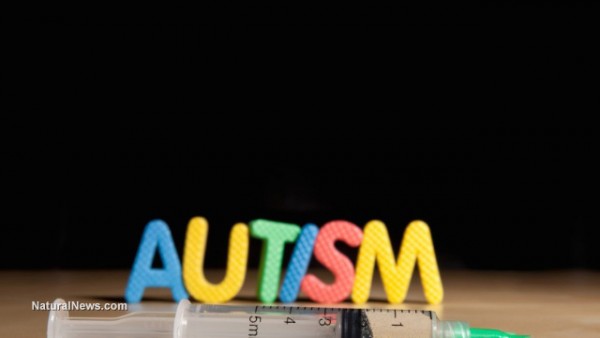New stem cell treatment on the horizon for people with autism
04/11/2017 / By Vicki Batts

Autism, or autism spectrum disorder, is an increasingly common condition that is estimated to affect an average of 1 in 68 children. Statistically, it affects 1 in 42 boys, and 1 in 189 girls, according to a 2014 estimate from the CDC. Some reports have indicated that the frequency of autism may even be as high as 1 in 50, however. Most children are diagnosed around age 2 or 3, though diagnoses can be confirmed as early as 18 months of age. Autism is characterized by a range of traits that include repetitive behaviors and challenges with social skills, speech and nonverbal communication. Autism spectrum disorder has no one “set” of symptoms and instead encompasses a range of different abilities and difficulties.
While it is often said that the shift in diagnostic criteria is what has led to the stark increase in cases of autism, many people feel that this alone is not enough to explain the dramatic rise in autism diagnoses. In 2015, Michael Rosanoff, Autism Speaks’ director of public health research, states, “[T]hese factors alone don’t account for the entire increase in autism prevalence reported over the past two decades.”
Some studies have shown that vaccinated children are more likely to be diagnosed with autism, while others have shown that GMOs and glyphosate may play a role in the condition’s increasing prevalence. While health officials have been dragging their feet when it comes to these concerns, there is at least some research being done on the matter. While autism spectrum disorder is by no means a death sentence, many parents are desperate to help their children in any way they can, so their kids can lead lives that are as fulfilling as can be.
The power of the elements: Discover Colloidal Silver Mouthwash with quality, natural ingredients like Sangre de Drago sap, black walnut hulls, menthol crystals and more. Zero artificial sweeteners, colors or alcohol. Learn more at the Health Ranger Store and help support this news site.
A new treatment using stem cells seeks to broaden the horizons for autistic children, and help to improve the symptoms of the condition. Recently, 25 children with an average age of 4.6 years took part in a landmark study pioneered by researchers at Duke University, in Durham, North Carolina. The results of the trial were just published in the journal Stem Cells Translational Medicine and boasted some impressive findings.
The goal of this Phase I trial was to see if transfusing autistic children with their own umbilical cord blood, which contains rare stem cells, could help to treat their autism. Their results were striking: Approximately two-thirds of the children showed marked improvements. The children were evaluated with an array of behavioral and functional tests prior to the administration of the cord blood, and these tests were repeated again at 6 months and 12 months after the infusion. Assessments over the entire 12-month period showed that the treatment was safe and well-tolerated.
More astounding, however, were the notable improvements in the children’s behaviors and functionality. Parental reports indicated that the kids showed improvements in areas of social communication and general autism symptoms. There were also documented clinical improvements of overall autism symptom severity, as well as changes in standardized assessments of expressive vocabulary, and objective eye-tracking measures of the children’s attention to social stimuli.
The research team states that these advancements were documented at 6 months and that they were sustained at the 12-month evaluation, and note that higher baseline nonverbal IQ scored were associated with a higher level of improvement.
Could this stem cell therapy be the way of the future for children with autism? Only time will tell. While this study was an open-label study with no controls, rather than a controlled double-blind study, the findings are still promising for the future. (RELATED: Read more stories about the latest research at Scientific.news)
Sources:
Tagged Under: autism, autism treatment, stem cell therapy




















